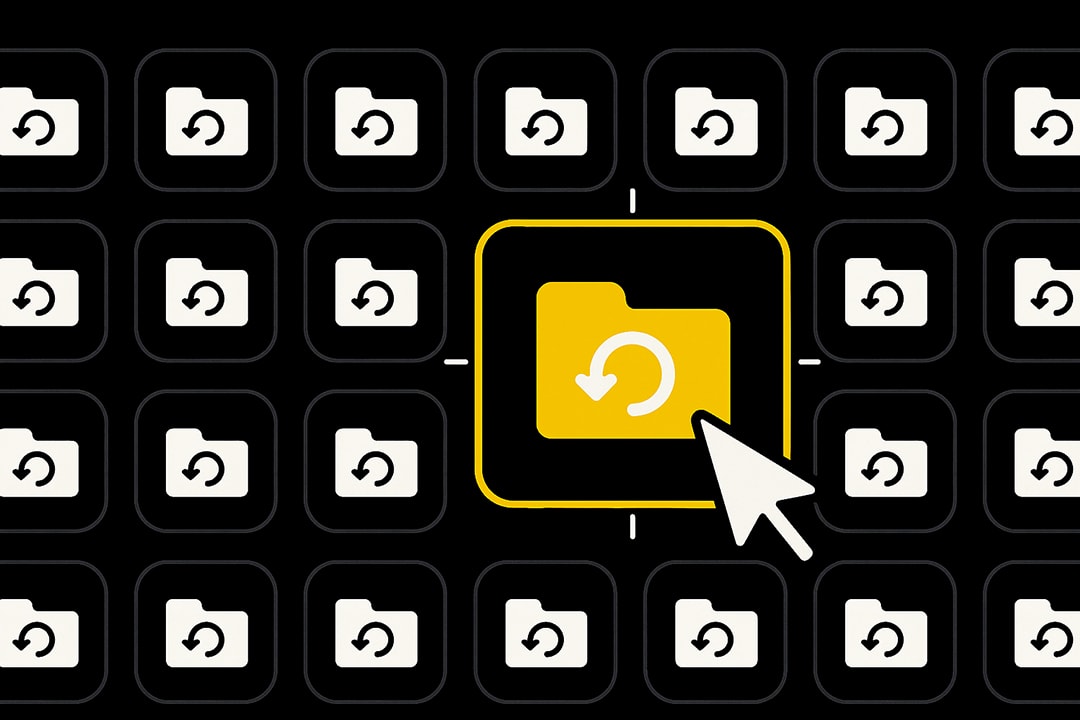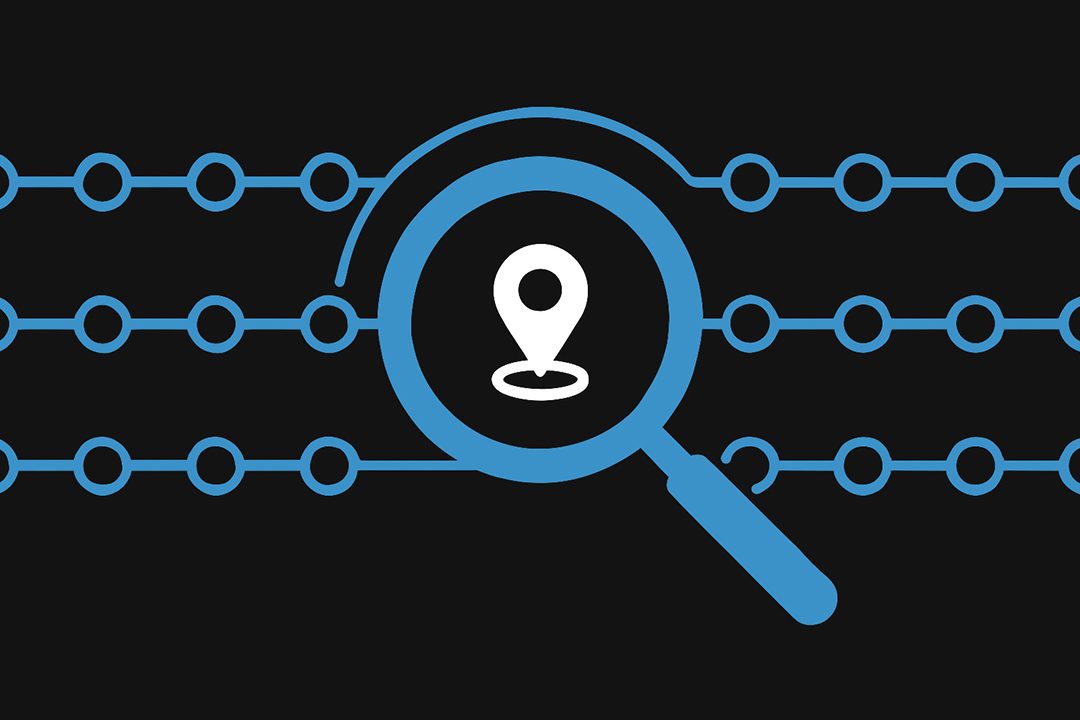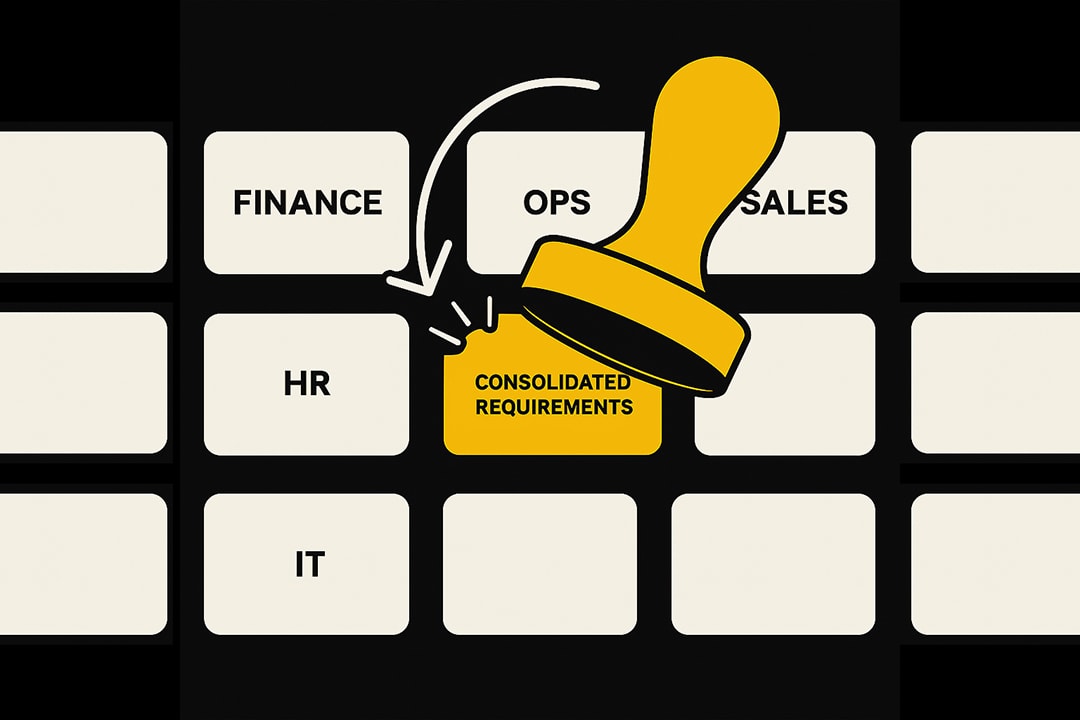Top Data Backup & Recovery Solutions For IT Leaders in 2026
Compare leading data backup and recovery vendors for your next IT project. See how they differ in features, compatibility, pricing, and more to find the right partner for your business.

Top Backup & Recovery Solutions Compared
You’re looking for backup and recovery vendors. Great.
Picking a vendor who can match most, if not all, of your requirements can be overwhelming.
Especially because back and recovery solutions come with a lot of features like RTO/RPO, failovers, backup coverage, immutable backups, etc.
And on top of that, there are hundreds of vendors, MSPs, or VARs in the market offering solutions that all seem the same on the surface, but as you’ve now realized, are just demos and sales talk.
Big players like Veeam, Cohesity, or Commvault are great if you’ve got a pretty core IT team that wants customizable control over solutions. But you’re looking for a vendor that could “handle it all” from providing the services to managing and scaling it.
Well, this article will explore and compare backup and recovery vendors who have provided tech buyers with no-bullshit solutions.
So, let's just get into it.
1. Meridian IT – mProtect Backup & Recovery

Meridian IT's mProtect solution is built on Commvault, one of the most powerful enterprise data protection platforms available. It's offered in two tiers: mProtect Platinum and mProtect Flex. This gives you options based on your budget and workload requirements.
Key Tools & Architecture
- Meridian is using the brand mProtect, built on the mature enterprise backup platform Commvault. Their marketing states “seamlessly combining mProtect’s expertise with Commvault’s state-of-the-art technology” to deliver data resilience.
- Their “Flex” tier supports physical, virtual, database, and application backups across on-premises, cloud, or hybrid.
- They also provide Disaster Recovery as a Service (DRaaS) capability: “recover mission-critical applications and data in as little as a few hours.”
- Geographic footprint: global (US, UK, Germany, SG, Australia, India) covering multi-region backups.
Pros
- Strong enterprise platform (Commvault) gives deep feature set: deduplication, application-consistent snapshots, and multi-platform support.
- Flexibility: “pay-as-you-go” / “mProtect Flex” for budget-sensitive workloads.
- Global service/regional presence: helpful for multi-national organisations.
- Explicit support for hybrid (on-prem + cloud) and DR services, which many simpler offerings don’t emphasize.
Cons
- Cost: Enterprise platform + global service means likely higher TCO.
- Complexity: Because of broad capability, you may require more implementation effort or specialist operations.
- Public transparency: While they mention “few hours” for recovery in DRaaS, fully detailed SLAs for backup may require validation.
- Smaller organisations may find it overkill or not rightly scaled for their simpler needs.
Best suited for
- Large enterprises with hybrid or multi-cloud infrastructure, needing strong compliance (global/regional) and broad service coverage.
- Organisations that already have complex data footprints (VMs, physical, SaaS, legacy systems).
- Firms that need full DR capability (not just backup) and want a managed provider to handle operations.
Evaluation questions
- What exactly are your RTO/RPO guarantees for the backup vs DR service?
- How is immutability or air-gap protection handled in your architecture?
- What are your restore metrics in real customer environments?
- How much of the service is fully managed versus requiring internal team effort?
- What is the cost/metering model for the “Flex” tier and how does it scale as data grows?
2. Comport – Backup as a Service (BaaS) & DRaaS

Comport offers Backup-as-a-Service (BaaS) and Disaster Recovery-as-a-Service (DRaaS) solutions. They leverage partners like Veeam, Commvault, Cohesity, and Zerto.
Their value lies in flexibility. They can tailor architectures for different client needs instead of forcing you into a single platform.
Key Tools & Architecture
- Comport offers both Backup as a Service and Disaster Recovery as a Service.
- They emphasise “vendor-agnostic” model: flexible options backed by experts, cloud-based replication, encryption.
- Their DRaaS emphasizes cost savings by using cloud models instead of traditional duplication sites.
Pros
- Flexibility in choosing vendor/tech stack: good for heterogeneous environments.
- Managed service model helps organisations offload the routine backup & DR burden.
- Good for organisations that may not need a one-size-fits-all but want tailored architecture.
Cons
- Since architecture varies per customer, the solution may require more upfront design/work — “how it works” may differ.
- Because of flexibility and customisation, pricing and SLAs may be less standardised and thus harder to compare.
- Public documentation may not highlight advanced features (immutability, ransomware defence) as strongly.
Best suited for
- Mid- to large-scale organisations with mixed environments (on-prem + multiple clouds + legacy apps) who value choice and tailored solutions.
- Organisations with in-house IT that want a partner to manage backups/DR but still retain/vendor flexibility.
Evaluation questions
- Which backup engine(s) and storage targets will be used for my project?
- What are the SLAs for each tier of service (backup recovery, DR failover)?
- How do you ensure consistent performance given differing underlying technologies?
- How are costs structured (flat rate vs data growth vs endpoints)?
- How is ransomware protection built into the stack (immutable, replication, detection)?
3. SureLock Technology – Cohesity-Powered Data Protection & Recovery

SureLock positions itself around Cohesity's modern data management platform. Cohesity is known for its unified approach to backup, file management, and ransomware protection.
The platform consolidates secondary storage, enabling faster restores and immutable backups.
Key Tools & Architecture
- SureLock partners with industry-leading platforms like Cohesity and Rubrik to deliver backup & data protection.
- Their collateral claims: “one client reduced recovery times from hours to minutes.”
- The platform emphasises unified backup across on-prem, cloud, edge, with strong ransomware defence built in (via Cohesity).
Pros
- Modern platform: Cohesity means consolidation of backup, recovery, secondary storage in one architecture.
- Strong ransomware resilience: immutable snapshots, unified control, quick recovery.
- Simplifies operations (fewer disparate tools to manage).
- Good mid-market fit and for regulated industries (healthcare, legal) where recovery speed and simplicity matter.
Cons
- Because it leans heavily on one platform (Cohesity), less flexibility if you already have or want to adopt another vendor’s engine.
- For very large or extremely heterogeneous enterprise environments with many legacy systems, you may need additional complementary tools.
- Detailed pricing or SLA metrics may require direct vendor engagement.
Best suited for
- Mid-market organisations that prioritise fast recovery, ransomware protection, and want simpler architecture rather than managing many disparate tools.
- Regulated industries with compliance needs and limited tolerance for downtime.
Evaluation questions
- What is the actual RTO achieved for typical recovery cases (VMs, file, database)?
- How is immutability implemented and what is the air-gap / off-site strategy?
- Does the service cover SaaS app backups (Office 365, etc) and data across cloud + on-prem?
- What is included in the managed service (monitoring, reporting, restore testing)?
- If I already have another backup engine, how would integration or migration work?
4. GDS Technology – Managed Backup & Recovery for SMBs / Mid-Market

GDS focuses on small-to-medium enterprises seeking reliable, compliant, and cost-effective data protection. Their service emphasizes encryption, redundancy, and 24/7 monitoring.
Key Tools & Architecture
- GDS promotes “advanced data backup and recovery services designed to protect small and mid-sized businesses from data loss and downtime.”
- Their service set includes encryption, 24/7 monitoring, compliance (HIPAA/PCI) orientation.
- They are a managed IT services provider with backup bundled alongside broader IT, cloud, cybersecurity offerings.
Pros
- Simplicity and target fit: for SMBs with limited resources, the managed backup service is attractive.
- Compliance-aware for smaller enterprises that may still have regulatory requirements.
- Localised support and full service (managed backup, monitoring, recovery) means less internal burden.
Cons
- Lack of publicly detailed architecture: which backup engine, storage targets, immutability features are less clearly disclosed.
- May not cover highly complex enterprise architectures or mass data scale as effectively as enterprise-grade platforms.
- Possibly less aggressive in RTO/RPO metrics compared to the enterprise vendors.
Best suited for
- Small and mid-sized businesses seeking turnkey backup and recovery, especially in regulated sectors but not large enterprises.
- Organisations that prefer the vendor to handle everything (from monitoring, backup, reporting, recovery) and have limited internal IT backup expertise.
Evaluation questions
- What backup engine and storage architecture are you using (vendor, target infrastructure)?
- What are your typical RPO/RTO metrics for your clients?
- How do you implement immutability / ransomware protection?
- What is included in the service (restore tests, monitoring, monthly reports)?
- How scalable is this service as our data grows?
5. TemplarSoft – Security-/Governance-First Backup & Recovery

TemplarSoft's platform centers on ISO-27001 certified processes and documented backup policies. They emphasize cloud/off-site storage, recovery testing, and data protection best practices.
Key Tools & Architecture
- TemplarSoft has ISO-27001 certification and their “Information Security Policy” spells out detailed backup and restoration controls aligned to Annex A of the ISO standard.
- Their public content emphasises governance, process controls, backup policy, off-site storage, documented restoration testing—but less architecture detail (platforms, recovery time metrics) publicly.
Pros
- Strong for organisations where audit, documentation, process controls around backup and recovery are paramount.
- Aligns with governance/regulatory focus – which can be an important differentiator for risk-focused organisations.
- Good fit where backup is part of a broader security/resilience strategy, not just a technical function.
Cons
- May lack the public visibility of recovery-time metrics or advanced technical features (like single-click restore, ransomware detection) compared to vendors that brand those explicitly.
- For environments requiring very aggressive RTO or complex hybrid cloud setups, you’ll need to validate the technical stack behind the policy.
- Because platform details are less visible, more due diligence is needed.
Best suited for
- Enterprises with high governance/compliance needs (legal, finance, government) who must show backup processes, audit readiness, and certified controls.
- Organisations where backup is part of a larger risk-management and resilience programme rather than just IT operations.
Evaluation questions
- What backup architecture underpins your service (vendor, storage, cloud region)?
- How often do you test restores and provide audit logs of those tests?
- What are your RTO/RPO performance statistics?
- How do you handle immutable copies/air-gap strategy?
- How is your service priced, and how does it scale as data grows or complexities increase?
Strong Comparative Analysis: Picking the Right Solution
Key Insights / Takeaways
- If you require maximum flexibility across many technologies and prefer to tailor your stack, Comport is the strongest.
- For organisations prioritising speed of recovery and ransomware resilience, SureLock (with Cohesity) stands out.
- For enterprises with complex hybrid infrastructure and regulatory demands, Meridian is very strong.
- For SMBs with fewer resources and needing simpler managed service, GDS is a great fit.
- For audited, process-driven organisations where backup governance is as important as technology, TemplarSoft fills that niche.
What to watch out for in evaluations
- Don’t just rely on vendor marketing; ask for actual customer recovery times and restore-test results.
- Ensure you understand how immutable/air-gapped backups are handled—this is now non-negotiable given ransomware risks.
- Clarify pricing escalation: data volumes grow, so ensure the model scales predictably.
- For cloud/hybrid workloads: ensure support covers endpoints, SaaS apps, databases—not just classic server backup.
- Check regional data residency and support if you operate globally (APAC, EMEA).
- Managed service vs self-managed: understand how much operational burden falls on you vs vendor.
- Compliance/audit readiness: if your industry demands audit logs, certification (ISO/27001, SOC2), ensure vendor can deliver.
- Recovery drilling: How often is full restore testing done? Are logs available?
- Hidden costs: e.g., egress fees, extra charges for SaaS exclusions, additional modules for ransomware detection.
Find Your Perfect Backup & Recovery Partner on TechnologyMatch
Choosing a backup and recovery partner isn't about picking the biggest brand. It's about aligning technology, service, and reliability with your organization's risk tolerance and data landscape.
Whether you need enterprise-grade resilience like Meridian IT, multi-vendor flexibility from Comport, ransomware protection from SureLock, SMB-friendly simplicity from GDS, or governance strength from TemplarSoft, each brings unique value.
But evaluating them shouldn't take weeks.
We at TechnologyMatch vet vendors before we enlist them on our platform. Vendor selection is as difficult as it already is. The vendor noise shouldn’t make it worse.
Here's how you can explore potential partners on the TechnologyMatch platform and connect with them for your IT projects, starting with Backup & Recovery partners:
1. After you signup to TechnologyMatch, search for “Backup & Recovery" on the dashboard.

2. Navigate through the solutions providers and their offerings. Accept the Match with the potential partner or vendor.

3. The new match will show up in the “My Matches” section of your dashboard. You can now message them or schedule a meeting. The meeting then shows up in your calendar.

We know how difficult it is to find and work with the right partners in the market today. There’s too much noise and not enough reliable solution providers. Which is why we built TechnologyMatch:
- Our platform is buyer-first so potential partners have no way of spamming with you cold outreach.
- Only you can make the first move by messaging them and scheduling calls.
- All your potential partners can be managed and evaluated from a single dashboard, without having to switch platforms or sift through emails.
- You get access to potential partners, resellers, vendors, and solution providers who have been verified through a strict vetting process.
Looking for IT partners?
Find your next IT partner on a curated marketplace of vetted vendors and save weeks of research. Your info stays anonymous until you choose to talk to them so you can avoid cold outreach. Always free to you.
FAQ
Q1. What makes Meridian IT’s mProtect solution a strong choice for large enterprises?
A: Meridian’s mProtect is built on the enterprise-grade Commvault platform and offers both a full-feature Platinum tier and a more flexible “Flex” tier. It supports hybrid on-prem + cloud + SaaS workloads across global regions, includes proactive monitoring and reporting, and a pay-as-you-go licensing option. Ideal for organisations with complex infrastructure, regulatory demands and large-scale data protection requirements.
Q2. How does Comport’s Backup-as-a-Service (BaaS) & DRaaS offering differ from traditional backup vendors?
A: Comport emphasises vendor-agnostic flexibility: it supports multiple backup engines (e.g., Veeam, Cohesity, Commvault), offers both backup and disaster-recovery services (DRaaS), and tailors architecture per customer. This makes it a good fit for organisations with heterogeneous environments (legacy + cloud + remote sites) that want choice and integration rather than being locked into a single platform.
Q3. Why is SureLock Technology a compelling option for ransomware-resilient backup in the mid-market?
A: SureLock anchors its service around a unified data management platform (such as Cohesity) and emphasises features like immutable snapshots, rapid restores (case studies show “hours to minutes”), and built-in ransomware protection. It’s especially suited for regulated industries (healthcare, legal) with mid-market scale needs where simplicity and security are critical.
Q4. What makes GDS Technology’s backup & recovery service well suited to SMBs and mid-market businesses?
A: GDS offers a managed backup and recovery service tailored to SMBs: encryption, 24/7 monitoring, compliance support (HIPAA/PCI) and “right-sized” options. It’s designed for organisations that may lack large internal IT teams, want straightforward protection without heavy infrastructure or complexity, and prioritize affordability and simplicity.
Q5. Why might an organisation focused on audit, process and governance choose TemplarSoft for backup and recovery?
A: TemplarSoft emphasizes governance, policy and certification (e.g., ISO‐27001) over heavy product marketing. Their framework includes documented backup policies, off-site storage, scheduled restorations and audit-ready controls. This makes them a strong fit for organisations in sectors where process, compliance and documentation are as important as raw feature-set (e.g., legal, government, finance).





